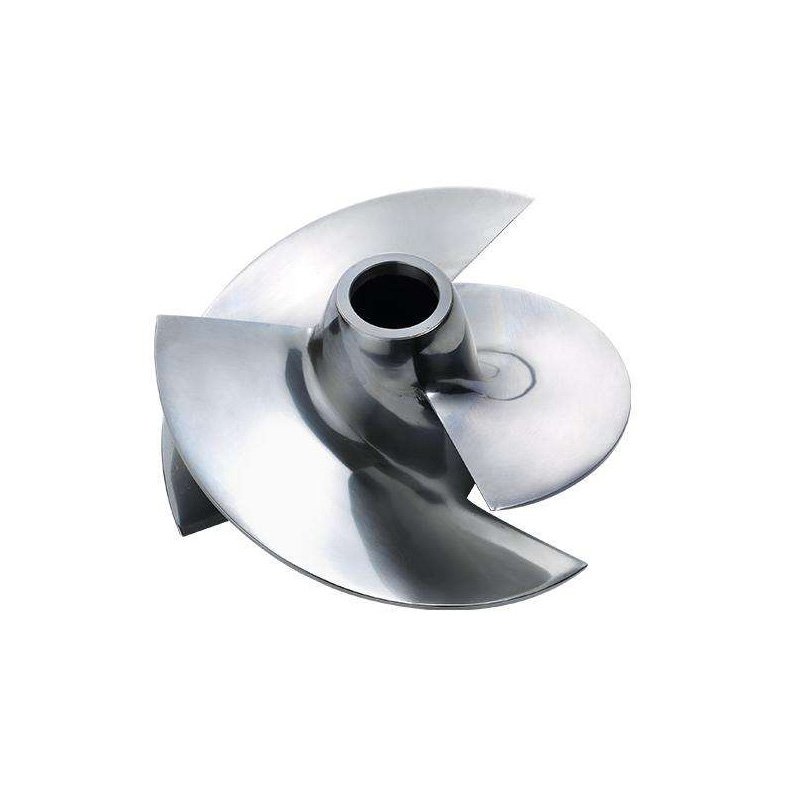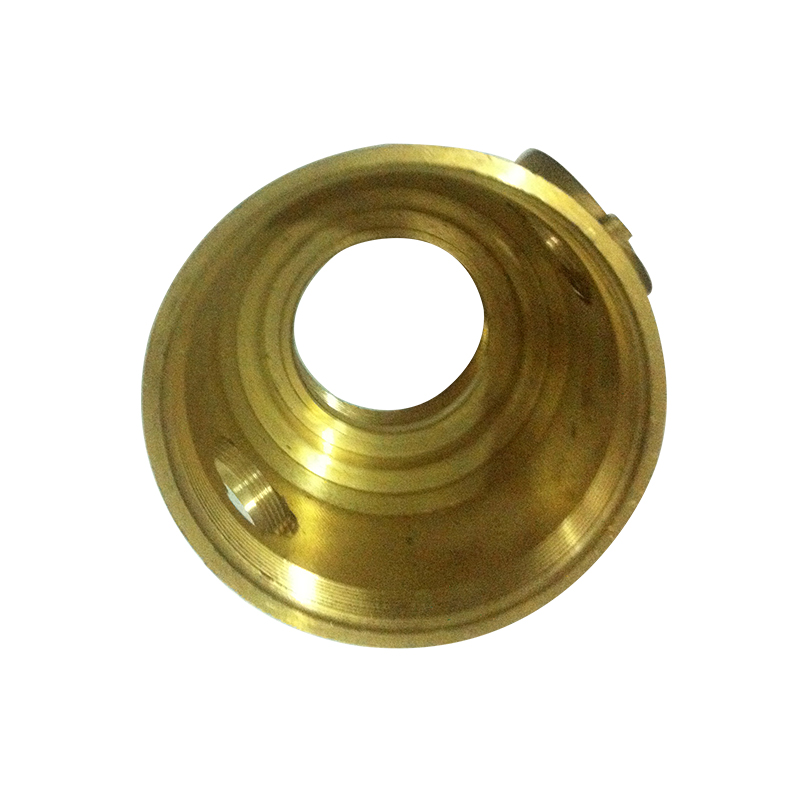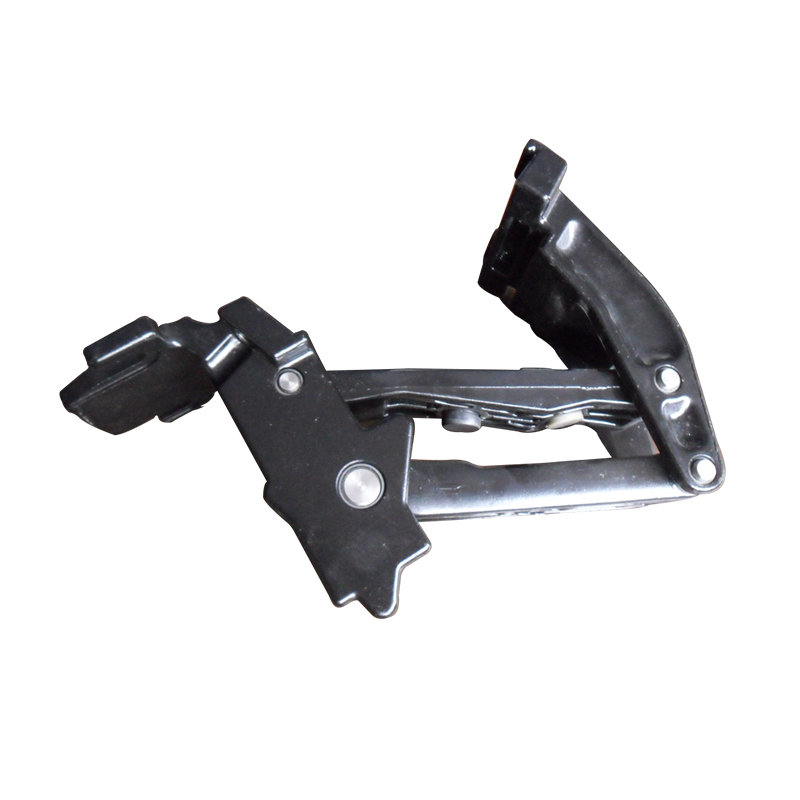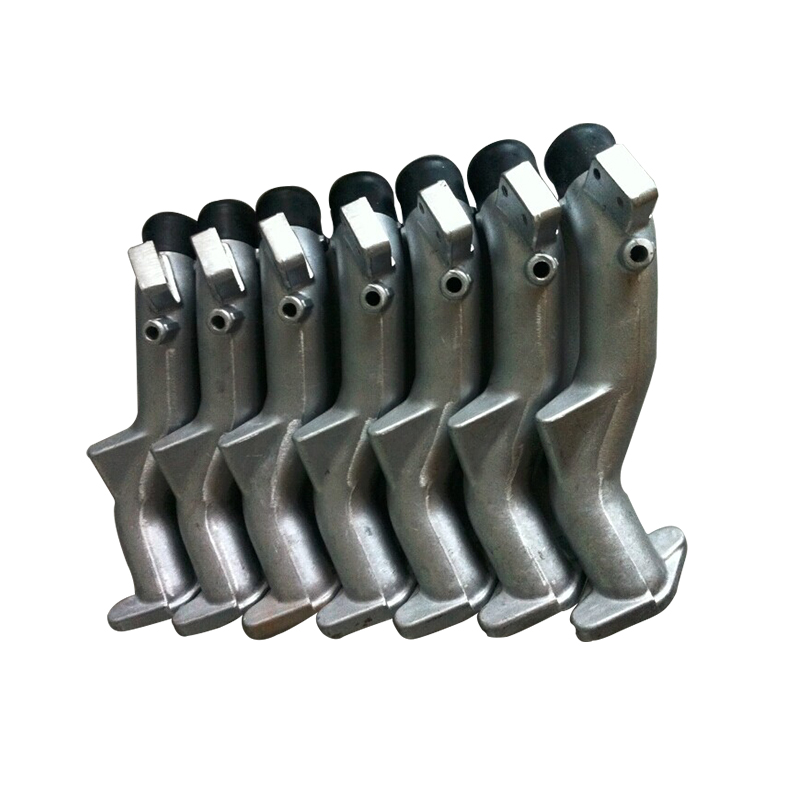Types of Surface Finishes in CNC Machining Components
When confronted with the decision of selecting the appropriate surface finish, the industry typically turns to three distinct categories. These categories encompass various techniques and processes that cater to specific needs and applications.
-
As Machined Finishing: As machined finishing refers to the surface condition achieved directly from the CNC machine, without the need for additional post-processing steps. This finish often exhibits visible tool marks and a textured appearance. The pivotal factor influencing the quality of this finish is the surface roughness (Ra), which quantifies the average deviation of the machined surface from the ideal state.
Industry standards often establish specific Ra values to gauge the quality of machined finishes, which can vary based on application requirements. It's crucial to acknowledge that while Ra is a key parameter, other factors such as surface integrity, waviness, and flatness contribute to the overall finish quality. Commonly adopted Ra values include:
- 3.2 μm Ra
- 1.6 μm Ra
- 0.8 μm Ra
- 0.4 μm Ra
The benefits of machined finishing lie in its dimensional tolerances; reduced surface roughness corresponds to tighter dimensional tolerances. Additionally, this method doesn't introduce supplementary costs, making it favorable for budget-conscious projects. Nevertheless, the presence of visible tool marks may not be suitable for projects that prioritize aesthetics, especially in high-value applications.
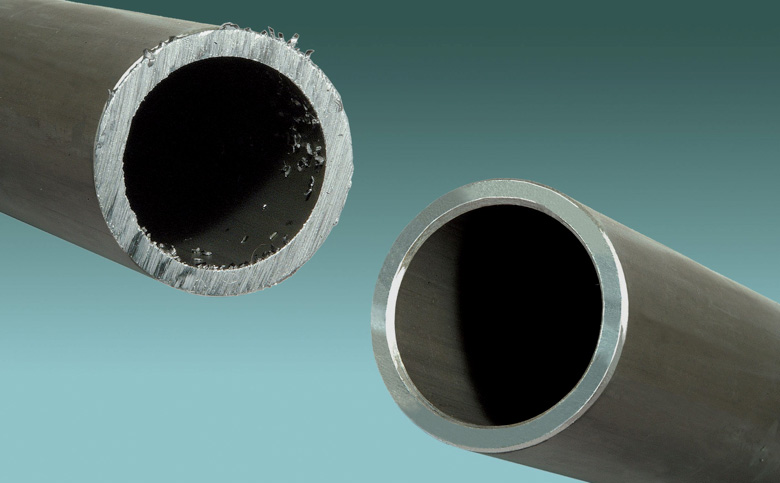
-
Chemical Finishing: Chemical finishing encompasses various processes that employ chemicals to create protective coatings and enhance the aesthetic appeal of the surface. These coatings often add color, shine, and other desirable attributes to the part. Noteworthy chemical-based CNC surface finishes include:
-
Anodizing: Anodizing involves immersing a part in an electrolyte solution to develop a protective oxide layer on the surface. There are two types of anodizing: type II and type III. Type II serves decorative purposes, while type III, achieved through higher voltage and lower temperature conditions, creates a robust layer suitable for demanding applications. It's essential to consider the brittleness introduced by the thicker type III layer when selecting between the two methods. Anodizing provides corrosion resistance, wear resistance, and a wide array of color options, enhancing both functionality and aesthetics. However, it can be expensive and may not suit applications demanding high precision.
-
Alodine Coating: Alodine coating, also known as chromate conversion, is commonly applied to non-ferrous metals like aluminum. This process creates a thin chromate layer that boosts corrosion resistance and adhesion. Parts with Alodine coating often receive an additional paint coat for prolonged durability.
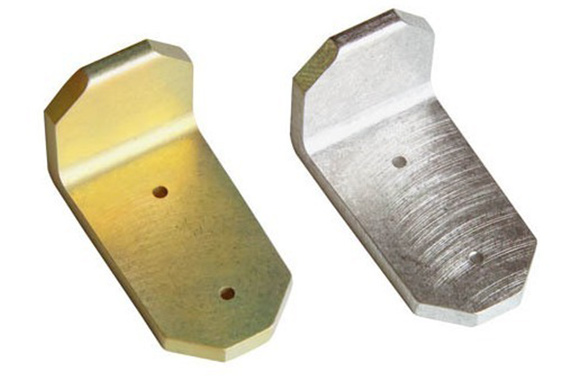
-
Each surface finishing method serves specific purposes within the CNC machining industry, addressing requirements related to appearance, functionality, and cost considerations.
Alodine Coating: Alodine coating, also referred to as chromate conversion, is a prevalent process employed on aluminum and other non-ferrous metals. This procedure involves applying a thin chromate coating to the surface of the component. This coating serves to bolster corrosion resistance and adhesion. In many cases, parts treated with an Alodine coating are subsequently provided with an additional layer of paint to ensure prolonged durability.
However, there are notable concerns associated with Alodine coating. Firstly, it poses environmental hazards and significant safety risks for personnel engaged in its application. Furthermore, the process itself is intricate and demands exceptional precision, which can potentially elevate costs.
Black Oxide Coating: Black oxide coating finds compatibility with materials like steel, copper, and other alloys that react favorably with oxygen. It forms a robust oxide layer throughout the part's surface, offering protection against contaminants and physical damage. Beyond corrosion and wear resistance, black oxide coatings exhibit high lubricity, making them apt for applications where friction is a concern.
Nonetheless, black oxide finishing does come with drawbacks. Most notably, it is susceptible to abrasion, rendering it unsuitable for applications involving high mechanical stress. Moreover, its corrosion resistance might not suffice under prolonged exposure to harsh conditions.
Electroplating: Electroplating is among the most commonly employed surface finishing techniques in CNC parts due to its versatility and advantages. This method involves depositing a thin layer of metal onto the workpiece, offering protection against corrosion and contaminants, as well as enhancing the overall appearance.
The benefits extend beyond functionality; electroplating is lauded for its ability to elevate the aesthetic appeal of surfaces. With options for decorative and satin finishes, electroplating is deemed one of the most visually appealing choices in the industry. This makes it ideal for applications where aesthetics carry significant weight. Whether seeking to enhance the visual allure of a product or elevate the appearance of a component, electroplating stands as an excellent option.
However, electroplating is a complex and precise process demanding substantial technical expertise for successful implementation. Additionally, it involves the use of hazardous chemicals and consumes notable energy, raising environmental concerns. Moreover, its application is restricted to conductive materials, limiting its use in specific industries.
Passivation: Passivation is a prevalent post-processing technique in CNC machining that enhances surface quality and part performance. Following the machining process, micro-roughness or surface impurities may be present, potentially affecting long-term performance. Passivation mitigates these issues.
Typically employed on stainless steel parts, passivation involves a thorough cleaning to eliminate residual oils, coolants, or metal debris. The parts are then immersed in a passivation solution, which may consist of nitric acid, citric acid, or a combination.
During passivation, the solution chemically interacts with the surface, eliminating impurities and creating a uniform oxide layer. This layer bolsters corrosion resistance and safeguards against environmental factors. The process duration varies based on part size and complexity.
Mechanical Finishes: Another class of surface finishing entails mechanical processes. In this category, the workpiece is subjected to various stresses and abrasions to attain the desired final product. While many mechanical finishes do not require post-processing, additional options like painting can be employed to enhance longevity and durability.
Several common types of mechanical finishes for CNC parts include:
Bead Blasting: Bead blasting involves projecting glass or ceramic beads onto the surface to create a textured, matte finish. This masks imperfections and preserves a uniform appearance while effectively removing
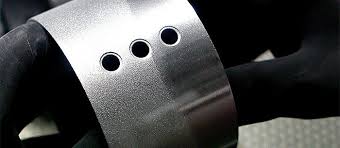
contaminants. However, errors can lead to surface damage, and the process can impact dimensional accuracy and functionality, often entailing higher costs suitable for luxury or high-value items.
Powder Coating: Powder coating, highly prevalent for metallic parts, is admired for its durability and versatility. It resists scratches, chips, and fading over time, and offers a wide spectrum of colors for enhanced aesthetics. Its eco-friendliness further contributes to its popularity, making it a versatile choice.
However, initial costs for equipment and materials are relatively high, making it less viable for small production runs or unique parts. Elevated curing temperatures restrict material and application options.
Brushing: Brushing serves as a surface treatment method, cleansing the workpiece for subsequent finishing. This process employs metal-wire brushes or abrasive pads to physically remove contaminants. Simplicity characterizes brushing, requiring no specialized skills or machinery.
Yet, brushing can inadvertently damage the surface and is limited to manual operation, consuming time.
Polishing: Polishing achieves surface smoothness through abrasive action, progressing from coarse to fine abrasives. It enhances durability by reducing the risk of cracking or chipping. However, the time-consuming nature and potential high costs, particularly for complex geometries, are drawbacks.
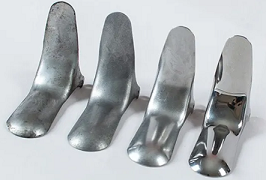
Painting: Metal paints furnish protection through comprehensive surface coverage. Lacquer and polyurethane shield against water and contaminants, but susceptibility to abrasions and chemical exposure leading to peeling are disadvantages.
Painting offers diverse colors and finishes, serving numerous CNC machining applications, although certain cases can be environmentally detrimental and demand prolonged drying periods for adhesion.
Selecting the appropriate surface finish for CNC machining parts is a critical decision that impacts both functionality and aesthetics. The choice depends on various factors, including the part's purpose, material, environment, budget, and desired appearance. Here's a step-by-step guide to help you make an informed decision:
1. Identify the Purpose of the Part: Understand the role the part will play in the overall product or system. Is it structural, decorative, or functional? This will guide you in determining the required level of finish, such as whether it needs to be smooth for assembly, resistant to corrosion, or visually appealing.
2. Consider Material Compatibility: Different surface finishes are better suited for specific materials. For example, anodizing is commonly used for aluminum, while electroplating is suitable for conductive metals. Ensure the chosen finish is compatible with the material to prevent adverse reactions or compromised performance.
3. Assess Environmental Factors: Consider the environment in which the part will operate. Will it be exposed to humidity, chemicals, abrasives, or extreme temperatures? Certain finishes offer better protection against corrosion, wear, and other environmental stresses. Choose a finish that can withstand the anticipated conditions.
4. Evaluate Aesthetic Requirements: If appearance matters, select a finish that aligns with your design preferences. Some finishes, like anodizing, offer a range of color options, while others like powder coating provide a smooth and consistent appearance. Choose a finish that complements your product's visual requirements.
5. Determine Functional Requirements: Examine the functional needs of the part. Does it require a certain level of friction, lubricity, conductivity, or resistance to specific substances? Different finishes offer varying levels of performance in these areas. For instance, black oxide coatings provide high lubricity, while electroplating enhances conductivity.
6. Consider Budget Constraints: Different surface finishes come with varying costs. Some finishes, like anodizing and electroplating, can be more expensive due to the complexity of the process and materials involved. Factor in your budget when selecting a finish, but also consider the long-term value the finish provides.
7. Think About Post-Processing: Consider whether the part will undergo any subsequent processes after finishing. For example, parts with Alodine coating often receive additional paint coats. Ensure the chosen finish can accommodate any post-processing steps without compromising its quality.
8. Understand Lead Times: Certain surface finishes might have longer lead times due to the complexity of the process. Factor in the project timeline and ensure the chosen finish can be completed within the required timeframe.
9. Seek Expert Advice: If you're unsure about the best surface finish for your CNC machining part, consult with experts in the field. Material engineers, finishing specialists, and CNC machining service providers can offer valuable insights and recommendations based on your specific requirements.
10. Test and Prototype: If possible, create prototypes or small batches with different surface finishes. This allows you to evaluate how each finish performs in real-world conditions and helps you make an informed decision based on practical experience.
In conclusion, selecting the right surface finish for CNC machining parts involves a comprehensive evaluation of factors such as purpose, material, environment, aesthetics, budget, and functionality. By carefully considering these aspects and seeking expert advice when needed, you can choose a surface finish that optimally meets your project's requirements.
Ningbo Fuerd was founded in 1987 and is a leading full-service die Casting Tooling, aluminum die casting, zinc die casting, and Gravity casting manufacturer. We are a solution provider offering a wide array of capabilities and services that include engineering support, designing, molds, complex CNC machining, impregnation, tumbling, chrome, powder coating, polishing, assembly, and other finishing services. We will work with you as partners, not just suppliers.
NINGBO FUERD MECHANICAL CO., LTD
Website: https://www.fuerd.com
